#genevan
Text
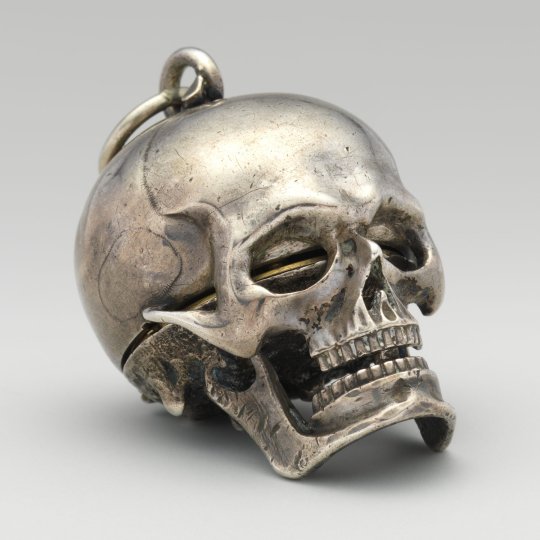

Silver skull pocket-watch made by the Genevan watchmaker Isaac Penard c.1650, Met
#dark academia#light academia#academia aesthetic#classical#academia#escapism#classic literature#books#books and libraries#architecture#object#pocket watch#1600s#17th century#silver#skull#genevan#royal core#cottage core#aesthetics#isaac penard
758 notes
·
View notes
Text

From the School of Jean-Jacques Rousseau (Genevan, 1712-1778)
Landscape With Ruin, 1725
Birmingham Museums Trust
#Jean Jacques Rousseau#Genevan#art#Genevan art#1700s#ruins#fine art#european art#classical art#europe#european#fine arts#oil painting#europa#mediterranean#landscape with ruin#mediterranean landscape#classic art#western civilization
109 notes
·
View notes
Text
🥺💞 friend got me another Gospel of Judas analysis/commentary for Christmas. I am collecting accounts from the people who worked on authenticating it for Nat Geo like Pokemon
#'hey wait i know that name from my OTHER analysis text' <- guy whos so normal#now i have TWO analysis texts from people who translated and authenticated this thing from the second floor of a genevan pizza shop#living my best life rn
0 notes
Text
okay strages facta noctu nemanisi let's get this bread
1 note
·
View note
Text
one of my favourite part of Leverage is when they mention "famous cons" and it's just a bunch of words. Nate says "one of the classics" and the replies are The London Spank, The Genevan Paso Doble, and The Apple Pie. which is like The Cherry Pie, but with lifeguards. and sure, these all might be real, existing things, but they sound like shit they made up on the spot and honestly I love that for them. even better when they do it in LevRed and Harry is just sitting there next to them, zero idea what is happening, but it's too late to ask questions now.
248 notes
·
View notes
Text
Just want to share a beloved local tradition we’re celebrating today called L’Escalade. In Geneva we commemorate the darkest night of winter in 1602 when the Savoyards came with their ladders to lay siege to the city. The Genevans rallied and succeeded in beating back the invaders, in part thanks to the valiant effort of one Mère Royaume, who poured a cauldron of scalding soup on the Savoyards’ heads.
We celebrate with races and a torchlight parade (please excuse my crappy photos)


Kids dress up in costumes and knock on neighborhood doors to sing Escalade songs, to commemorate the Genevans rising in their pajamas to go wake each other up and join in the defense of the city.
And this is my favorite part, the chocolate cauldron which we smash as we recite “thus perish the enemies of the republic”. The veggies are marzipan 🥰
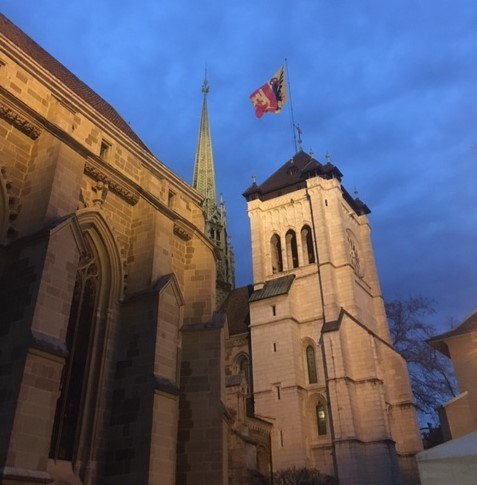
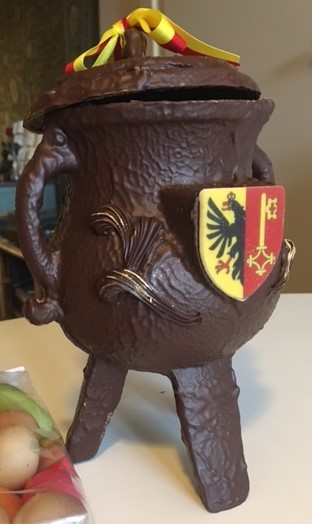
#dicton dujour#not tagging this because i'm too shy for it to break containment and the photos really are terrible#just sending chocolate & hugs to my mooties
35 notes
·
View notes
Text
I have been thinking about a line that John Laurens wrote to Francis Kinloch on August 23, 1774:
it grows so late that I must bid you Adieu, kiss all the pretty Genevoises for me, and dont delay to write to your affectionate John Laurens_
I don't speak French, but my understanding is that "Genevoises" is feminine plural and would translate to "Genevan women." So my question is - why did John ask Francis to kiss all of the pretty Genevan women for him?
This is the first letter John wrote to Francis after John arrived in London. He had just left Francis and their other friends behind in Geneva, a transition that was surely hard on him, as evidenced by an earlier line in the letter:
If my Letter is a little confused, dont be surpriz'd at it, for I am quite like a Creature in a new World, and shall be for some time in an unsettled State_ I am glad however to inform you that I shall not have Lodgings in the Temple as I at first thought_ but in some genteel private Family_ the Noise, the Cries the Smoak and Dust of this vast City, make me sometimes wish myself back at Paquis, I have another Reason too, for wishing myself there, I dont know when I shall get into such a valuable Set of Acquaintance as I have left_
I am of the opinion that John and Francis had a deeply romantic relationship - you can explore previous discussions about this in my Francis Kinloch tag. So what is the purpose of John asking his closest friend/lover, whom he only recently left, to kiss some pretty ladies on his behalf?
Was John being facetious? This seems like the most obvious answer, considering John rarely ever mentioned women in his other surviving writings and barely in any romantic context. Was he simply trying to make light of an emotionally trying time in his life?
Was there a hidden implication behind the words? The phrase conjures intimate images of Francis kissing people he finds attractive. Perhaps John was making a reference to kisses they'd shared in the past but veiled in a way that would not be so easily understood by other readers of the letter.
Was it performative? Was John feeling fear or uncertainty regarding his likely attraction toward men? Was he trying to make himself out to be something else?
Was John teasing Francis? Francis seems to have experienced attraction to women. A "Miss Stephens" that Francis appeared to seriously court is mentioned in a September 30, 1776 letter from John to Francis. Were there certain women in Geneva that Francis found attractive, and was John encouraging him to explore those attractions?
Or is there no hidden meaning? Did John think of the Genevan women as pretty and genuinely wish to kiss them?
A final note - I also find it interesting that the final "-es" in "Genevoises" is written detached from the rest of the word:

Is it possible that John originally wrote the word as "Genevois" (Genevan men, to my understanding) and then added the "-es" to alter the meaning? Probably not, as there is evidence that this was simply John's style of handwriting (as seen below in the word "present"), but it is something to consider.

#I rambled about this to ciceroprofacto like 2 months ago and I'm sure I'm not being as eloquent now#But it still occupies my mind every second of every day#John Laurens#Francis Kinloch#Laureloch#Someone who actually knows French can also contribute
151 notes
·
View notes
Text
[A]bout two third of the Swiss population visited the “Village noir” in Geneva. How is it possible that [...] the exhibition of 200 African people that two million people visited has fallen into oblivion? [...] Today, Geneva is considered one of the capitals of [so-called] [”]human rights[”]. Back in 1896, during the Swiss Second National Exhibition, it hosted a human zoo. There are very few visible references to it, except for one street called after its corresponding “white” exhibition, the “Village Suisse”. However, several researchers’ archival work helped unearth the history of the first Swiss “Village noir”. Inhabited by more than 200 individuals from Senegal, the village was situated a few streets from the city’s central square, the Plaine de Plainpalais. For six months, paying visitors observed these “actors” living their lives. Their religious ceremonies were advertised as public events. Tourists could take pictures with the African troupe and walk around their dwellings. [...]
Far from being a Swiss peculiarity, human zoos were spread around the West. Human exhibitions were a form of entertainment [...] [popularized] in the early 19th century in Great Britain. [...] [O]ne of the most famous shows was Sara Baartman, the “Hottenton Venus”. [...] [S]he was brought to Europe from South Africa to participate in an exhibition. Such “freak shows” spread around Europe and North America [...]. [I]n the late 19th century [...] shows became part of national and colonial exhibitions. The first ethnic exhibition of Nubians occurred in 1877 in Paris [...]. For the ticket-buying public, the experience was comparable to a visit to a regular zoo; it was about observing “exotic animals”.
As it often happens with animals, organisers re-created the subjects’ “natural habitat” [...]. The setting was constructed to perform authenticity. On the one hand, the civilisational discourse justifying colonial expansion and domination exaggerated the living representation and exhibition of the “savage” in need of enlightenment. On the other hand, the alleged brutality of the “native” was displayed through the mise-en-scène of their “primitive life”. These exhibitions did not present savagery; they invented a specific kind, which prepared the ground and fuelled further expansions and the ruling of “barbarian” and “uncivilised” societies. [...] All activities were meant to nourish Westerners’ enthusiasm for the exotic [...].
The turn of the century was among the highest points of scientific racism.
This was when the pseudo-scientific attempts to create a superior race thrived within Western anthropology and biology academic departments. For eugenicists, human zoos provided ‘samples’ for racist theories. During the Geneva National Exposition of 1896, Emile Yung gave a conference where he presented 15 people from the “Village noir”. He compared their skin colour and skull size to those of a Genevan. This process aimed to demonstrate how the size of the skull affected the level of civilisation and mental capacities. These ideas were spread among schoolteachers and helped crystallise and expand racist stereotypes. [...] Visitors were presented with an invented representation of Africa [...].
Moreover, as Patricia Purtschert of the University of Bern suggests, evolutionism and racist human-development theories at the core of the exhibitions had clear educational goals.
Thus, scientific racism developed within academia went hand in hand with popular racism: human zoos were places where these two faces of the same coin met. [...]
Indeed, Swiss scientists were active in shaping colonial mentalities. [...] Unlike other countries, Switzerland did not stop its human exhibitions during the interwar period. Until the 1960s, the national circus Knie presented the “Völkerschauen”. It included the display of [”]Eskimos[”], Catholic Indians, “mysterious Egyptians” or people with albinism. [...]
---
All text above by: Letizia Gaja Pinoja. “Dehumanisation, animalisation: Inside the terrible world of Swiss human zoos.” The Conversation. 23 June 2023. [Bold emphasis and some paragraph breaks/contractions added by me.]
39 notes
·
View notes
Note
Can you tell me about Louis de Vegobre and his possible relationship with Laurens and Kinloch?
Sure! Others will certainly know more, but here’s a little of what I’ve pulled together about these three.
Louis Manoel de Vegobre was a Swiss lawyer and intellectual who befriended Laurens during his time as a student in Geneva. He tutored Laurens in mathematics, and in return Laurens taught de Vegobre English. Kinloch arrived Geneva in May 1774, and although they only spent a few months together there (Laurens left in July 1774), they quickly formed a close-knit circle, studying and socialising together, and mingling with other English students and eminent Genevan scholars and scientists.
There is little written correspondence from that time, as there was no need to write letters to those who lived so close. But it is evident from Laurens’ letters after his departure that he loved his time in Geneva, in large part because of the relationships he had built there - he writes to Kinloch on 23 August 1774 that “I dont know when I shall get into such a valuable Set of Acquaintance as I have left”.
Whether all of this remained purely platonic, in the style of romantic friendship, or extended into homoerotic or even homosexual realms, is impossible to prove definitively - but there is a good deal of evidence that the three of them were more than “just friends”.
For one, they mingled with figures who were known to have homosexual inclinations. Among these was Swiss historian Johannes von Müller (himself at the centre of a web of queer figures, including Swiss writer Karl Viktor von Bonstetten), who was known for his homoerotic love letters and, per Rictor Norton, “always travelled with young male companions, and even set up house together in the Alps with the American Francis Kinlock [sic]”. They stayed together in Chambésy in 1775, which presumably is what Laurens is referring to, with evident longing, in his letter to Kinloch on 10 March 1775:
Mr. Boon has communicated your plan of spending the summer with Vegobre in some convenient retreat in Switzerland, a plan which I should of all things like myself, and which I dare to say you will find great benefit from.
What three young men of a certain persuasion might get up to in the privacy and safety of an alpine retreat I will leave to your imagination.
Side note on Müller and Kinloch - in 1802/3, Müller was involved in a homosexual scandal, after a former pupil faked love letters to him from a made-up admirer, to which Müller responded with equal (and damning) fervour. The ensuing scandal cost Müller his fortune. He writes a letter to Kinloch on 12 May 1803, explaining his dire situation, to which Kinloch responds:
L'idée de ce qui aurait pu arriver à cette extreme nocturne me fait frémir - Vous souvient il, cher ami, du commencement do notre liaison à Geneve?
My transcription:
The idea of what could have happened at this nocturnal extreme makes me shudder - Does it remind you, dear friend, of the beginning of our affair in Geneva?
Clearly, the mention of the scandal was a reminder to Kinloch of whatever they may have gotten up to twenty years prior.
In Laurens’ absence from Geneva, Kinloch and de Vegobre remained close, and all three of them wrote to and about each other using expressions of deep love and affection, expressing a desire for contact and closeness - which, to me, often veers into the romantic.
Here are some examples, in chronological order:
My beloved, my dearest friend is Kinloch […] Let me say again: Kinloch is my beloved, my dearest friend. […] You have began to make me feeling how hard it is to see the departure of a man to whom one’s heart is addicted
Louis de Vegobre to John Laurens, 24 December 1774
I would be wrong to hide from you that I was upset at you [but now I want to] occupy myself only with the pleasure I had upon seeing that your heart is without fault, and that you have maintained the same sentiments towards me that you expressed to me when you left Geneva. […] Permit me to remark to you that [a time of adversity] is where we know our friends, and that it is here (I dare say) that you will see that the attachments of my heart are not a light bond formed by pleasure which does not last beyond it. […] You congratulate me on my friendship with Kinloch, oh how right you are to congratulate me! What an excellent man! What a friend I have in him! […] I repeat that I am entirely at your service & that I responded very sincerely and very deeply to the feelings that you have expressed for me.
Louis de Vegobre to John Laurens, 18 October 1775
You and I may differ my Dear Kinloch in our political Sentiments but I shall always love you from the Knowledge I have of your Heart.
John Laurens to Francis Kinloch, 12 April 1776
we hold too fast by one anothers hearts, my dear Laurens, to be afraid of exposing our several opinions to each other […] Be certain that I never shall forget you
Francis Kinloch to John Laurens, 28 April 1776
that Letter & the pretty gift that you attached are very agreeable marks of your friendship […] I learnt that I was loved & esteemed by you as much as I could have desired […] I am much persuaded, my Dear, that if we could live together our mutual happiness would be augmented; especially when I think of the calamities that surround you, I would desire to be close to you, to witness your fortitude and to offer you the relief of my friendship […] I saw this morning our friend Kinloch: what shall I tell you of him which you don’t already know? […] I regard it is as one of the joys of my life to have become his friend.
Louis de Vegobre to John Laurens, 7 June 1776
And after Laurens’ blistering letter to Kinloch about their differing political views, Kinloch seemingly responds with hurt and offence, which Laurens tries to smooth over with a reaffirmation of his feelings:
I have no Copies of what I write, and therefore can’t be exactly sure of all the Expressions which I used in my Letter, this I am persuaded of that there was nothing in it that could be construed to throw any Imputation upon the Qualities of your Heart on account of the side you took in our political Dispute […] It was from the great Opinion I had of your Heart that I first wish’d to form a Friendship with you, it is from the great Opinion that I still have of it, that I am exceedingly desirous of cultivating and improving that Friendship […] I still think your political principles wrong, the Sentiments which you have adopted with respect to your own Country strike me with horrour, and I hope you’ll change them_ but I am persuaded you think they are right and your Heart with me is unimpeached_
John Laurens to Francis Kinloch, 30 September 1776
(Extracts above from de Vegobre’s letters of 18 October 1775 and 7 June 1776 are taken from my translations of the original French.)
#historical john laurens#john laurens#francis kinloch#louis de vegobre#johannes von muller#queer history#18th century history
80 notes
·
View notes
Text
by Andrew Kerr | We have so many good resources for singing Psalms well today that, by the grace of God, and with the help of the Blessed Spirit, we should devote ourselves with zeal to joyfully singing Christ's New Song.
In my formative years, I remember being constantly told by all my teachers, both in academics and sports: "Practice makes perfect"! The following quotation might make us blush a little as it reveals Genevan passion for…
3 notes
·
View notes
Text
Modern arts and craftsmanship in the Franck Muller Vanguard Collection: Crazy Hours Arctic Snoopy, Vanguard™ Color Dreams Loes Van Delft and Vanguard™ Slim Skeleton
Franck Muller likes to challenge the boundaries of fine watchmaking even further by integrating modern art and exceptional skills. This month, the Genevan Independent surprises with a new collaboration with Bamford Watch Department and PEANUTS™, releasing the sweet Vanguard Crazy Hours Arctic Snoopy. A new collaboration with the talented Dutch artist Loes Van Delft brings colours in focus in the…

View On WordPress
2 notes
·
View notes
Text
The Hamiltons and their Dutch Reformed wedding
[Text from Religions of the United States in Practice, Volume 1].

Alexander Hamilton and Elizabeth Schuyler were married on Thursday, December 14, 1780, in the largest parlor of her parents’ Albany mansion, by a minister of the Dutch Reformed Church, as is recorded in the church registry of the Reformed Dutch Church of Albany (now First Church in Albany). Domine Eilardus Westerlo,* the second husband of Catharina Livingston Van Rensselaer (mother of Stephen Van Rensselaer III) had presided at Angelica and John Church’s wedding at the Van Rensselaer Manor house north of Albany three years prior, but it’s unknown to me if he also was the minister for the Hamilton wedding.
It’s easy to speculate that AH, at least, thought that he and Eliza would be married at Morristown that spring 1780 - it was not common to have an engagement lasting several months, and it would have made sense to get married before the campaign. Morristown had both Anglican and Presbyterian ministers. But Philip Schuyler poured cold water on that, stating in a letter that it would not be proper for them to be married at Morristown (and certainly, not to elope). In one of his letters to his fiancee AH complains that their engagement has lasted “an age,” and in another asks if she would still like to elope - it’s easy to see that he was going along with this delay to make her family happy.
If AH, who stated in 1771 that he was a member of the English Reformed Church, and then had ties through Rev. Knox to the Scotch Presbyterian Church, had mixed feelings about marrying in the Dutch Reformed tradition, it is unrecorded, although he is quoting from the Anglican marriage rite in his Oct 1780 letter to Eliza and his reference to “nuptial benediction” is from Anglicanism (I wonder if he grimaced when he read this totally non-poetic marriage rite below, compared to this one). He and Eliza’s first child, Philip, was baptized at the Reformed Dutch Church of Albany on Feb 11, 1782, with Philip’s grandparents as witnesses. And maybe AH really took the marital admonitions from this Liturgy (quoting Matthew 19) to heart [see page 3 below], as he supported folks only being allowed to divorce in the case of adultery (not for cruelty, not for abandonment), which remained NY state law until 1967.
So let’s talk cool facts about the Dutch Reformed tradition in America:
One book that every (Dutch American) colonial family was certain to possess was a kerkboekje (church book) - containing the Dutch metrical Psalter (with the Genevan tunes), the Heidelberg Catechism, and the Netherlands Liturgy - which they carried with them to church every Sunday. In more well-to-do families, every person had a kerboekje of his or her own. Because of their high birth rate, Dutch Americans were able to maintain their language and culture under the English regime for another century. Their culture was so tenacious that the French and German immigrants who later settled in the Hudson Valley adopted Dutch as their language rather than English. [Here I interject that Sojourner Truth, born into slavery in 1797 in Swartekill, NY, was a native Dutch speaker who likely never lost that accent - her “Ain’t I a Woman?” speech was translated to a Southern dialect.]
After a hundred years of English rule, however, Dutch eventually lost its place as the language of New York and New Jersey.
English language preaching was introduced in 1763, and the church book was translated to English in 1767, becoming the New York Liturgy that became standard across all English-speaking Dutch Reformed Churches in the world. (Services in Albany would stay in Dutch through most of the 1780s, although I’m certainly hoping that their wedding wasn’t in Dutch, a language that I don’t believe we have any record of AH speaking.) This language certainly doesn’t have the flourishes of the Anglican liturgy - it’s pretty appalling from a literary point of view.
We know that Dutch women enjoyed stronger inheritance rights and a more elevated status than did their English peers. In cases of Dutch-English intermarriage, the couples usually ended up Dutch Reformed.
Obviously not the Hamiltons, who after Philip would baptize their next three children in the Episcopal Church (the Anglican Church of the USA) in 1788; the Hamiltons would remain Episcopalians for generations. Angelica Schuyler Church also became Episcopalian (and is the one we actually have a contemporary record of going to church with her own and the Hamilton children, other than presumed attendance for baptisms and at the 1st inauguration of GW), which makes total sense since she married an Englishman. It also makes sense that AH would return to the religious liturgies of his youth [See my lengthy post about the Hamiltons’ religious preferences.]
Getting back to the wedding stuff - although this researcher states that marriages were usually in church, I suspect that was for the plebs. Other books cite wealthy Dutch-Americans marrying at their homes, and then the bride wearing her finest outfit to church on the Sunday following her wedding. I have never found a reference to the Schuylers as a particularly pious family, nor have I found a reference to Philip Schuyler maintaining a pew for his family at the church in Albany. His youngest daughter does not cite him as an attendant, but as someone who kept private devotions and would sometimes recite a prayer service for the household (this was not at all uncommon).
Dutch American weddings were big, community, raucous affairs, almost everyone agrees. “Complaints about carousing and excessive drunkenness were not uncommon.” Philip and Catharine likely wanted to throw such a party!
Although they clearly wanted to witness and then throw a crazy party afterwards, Elizabeth’s parents would have played no role in the wedding itself. There was no giving away of the bride as there is in the Anglican rite, where the father (usually) affirms that he is giving “this woman to be married to this man.” Instead, this was a ceremony for two grown sober adults, choosing to live in the Married State, the Institution of God [see below].
Anyway, getting to the real point: below are my not-good photos of the form of marriage of the New York Liturgy. Considering the dates of this liturgy, this is likely what was read to and said by the Hamiltons at their wedding. This has some typical Reformed catechesis - “God will...judge and punish Whoremongers and Adulterers,” “Resist all Wickedness,” “Believe these Words of Christ, and be certain and assured, that our Lord God had joined you together in this holy State. You are therefore to receive, whatever befalls you therein with Patience and Thanksgiving, as from the Hand of God, and thus all Things will turn to your Advantage and Salvation.” It even starts off with such a great tone: “Whereas Married Persons are generally, by Reason of Sin, subject to many Troubles and Afflictions...”
A line that is unfamiliar to me from other Christian marriage rites: “[to the husband]..you are to labor diligently and faithfully, in the calling wherein God hath set you, that you may maintain your Household honestly, and likewise have something to give to the poor” [my emphasis]. And I am unaware of any other major Christian marriage rite that so blatantly states St. Paul’s admonition to get married to avoid fornication. Calvinism can be so grim (my apologies to any Calvinists reading this, but not really).

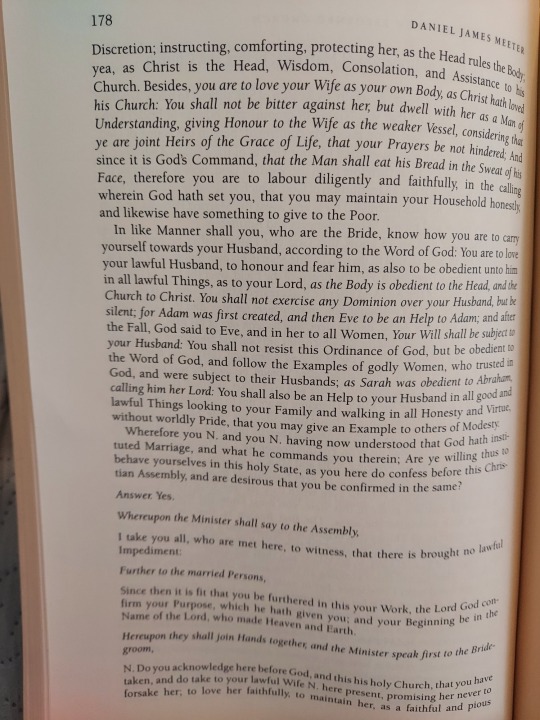
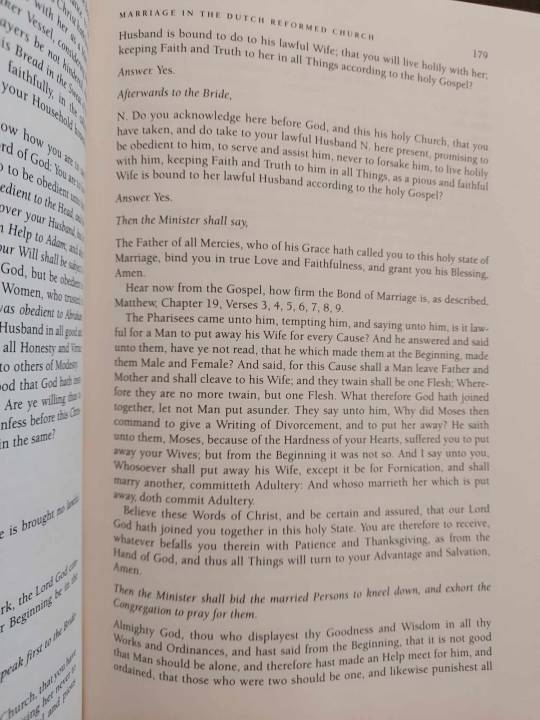
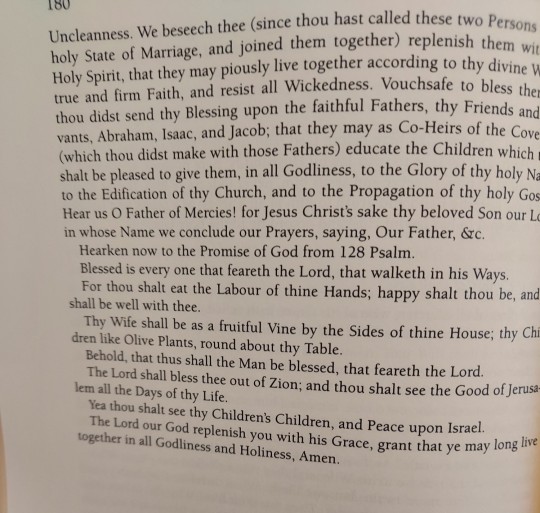
If you’ve made it this far, perhaps you’d also like to read about Dutch epithalamia. Epithalamia were wedding poems/songs - more specifically, for the marital bed/consummation - that were popular all the way from the classical period (they likely arose from the very elaborate wedding rituals of the past ancient Greeks/Balkan peoples) but largely disappeared in the late 19th century and have now been forgotten. There was quite a lot of literature/pamphlets/instruction manuals(?) about how to approach one’s wedding night; epithalamia was the far more naughty/raucous cousin to this literature. But I don’t think anyone really took some of this literature seriously:
...The chapter titled ‘Bruyt’ (Bride) highlights how respectable Protestants wished newly-weds the joys of a chaste Christian marriage and advocated the creation of a devotional atmosphere before becoming one flesh. Cats’s instructions about the wedding day cover various topics, such as the behaviour of the wedding guests, the bride and groom’s mental preparation, orchestrating the mood of the wedding banquet, the symbolic meaning of the bride’s crown, conduct at the nuptial bed, and pious conversation between bride and groom.
* h/t to Dr. Tom Cutterham for this, who is also working on a biography (and working to get a publisher for said biography) on Angelica Schuyler Church “which explores the processes of bourgeois class-formation in this period through the lens of her ideas, exploits, and transatlantic voyages.” He’s already released some of his research/early thoughts on “The Labor of Bourgeois Sexuality” during this period, or listen to the podcast, in which he reads from a section of his biography on ASC’s social climbing to get her husband into Parliament, including a ‘risque’ section of a letter from Baron von Steuben to Church.
#Alexander Hamilton#Elizabeth Schuyler Hamilton#Dutch Reformed Church#18th century marriage#Angelica Schuyler Church
8 notes
·
View notes
Photo

« 𝕻𝖔𝖘𝖙 𝕿𝖊𝖓𝖊𝖇𝖗𝖆𝖘 𝕽𝖔𝖈𝖐 • 𝕱𝖔𝖚𝖗𝖙𝖞 𝖞𝖊𝖆𝖗𝖘 𝖆𝖓𝖓𝖎𝖛𝖊𝖗𝖘𝖆𝖗𝖞 » 🐐🔥 . Digital Illustration, 2023 . I had the opportunity to work on a visual for the 40th birthday of @post_tenebras_rock It’s been 40 years that PTR is bringing eclectic and rock music here in Geneva 🇨🇭Slayer, Gojira, Wu-Tang or Nirvana are some of the many bands that played on PTR’s scene! As a genevan youth I’m more than proud to work with such an institution that is PTR 🙌 Thanks again to @darkmicheline for the trust and opportunity! The small square logo at the top has been drawn by the illustration master @perrodinthomas 😎 . . . . . . . . . . . . . . . . . . . . . . . . . #ptrgeneve #lusinegeneve #posttenebrasrock #rocknroll #rockposter #merchdesign #merchandising #tshirtdesign #visualsnacks #goat #ibex #artistforhire #fantasyart #heavymetal #metalmerch #acidgraphix #acidart #doommetalart #graphicdesign #deathmetal #dailyartwork #posterartwork #graphicillustration #itsnicethat #popsurealism #scifiartwork #retroscifiart #graphicjuice #designspirations #brutsubmission https://www.instagram.com/p/CpvWauNodeq/?igshid=NGJjMDIxMWI=
#ptrgeneve#lusinegeneve#posttenebrasrock#rocknroll#rockposter#merchdesign#merchandising#tshirtdesign#visualsnacks#goat#ibex#artistforhire#fantasyart#heavymetal#metalmerch#acidgraphix#acidart#doommetalart#graphicdesign#deathmetal#dailyartwork#posterartwork#graphicillustration#itsnicethat#popsurealism#scifiartwork#retroscifiart#graphicjuice#designspirations#brutsubmission
11 notes
·
View notes
Text
“Only fools, pure theorists, or apprentices fail to take public opinion into account.”

Jacques Necker was a Genevan banker and statesman who served as finance minister for Louis XVI. He was a reformer, but his innovations sometimes caused great discontent.
Born: 30 September 1732, Geneva, Switzerland
Died: 9 April 1804, Geneva, Switzerland
Swiss Origins: Necker was born in Geneva, Switzerland, in 1732. His Swiss background made him a foreigner in the French political landscape, and this sometimes influenced the perception of his policies.
Self-Financed Publication: Necker was known for his publication titled "Compte Rendu," or "Report on the Finances." This document, which detailed the state of France's finances, was unique in that Necker personally financed its publication. This move aimed to showcase transparency and gain public support.
Resignation through Illness: In 1781, Necker resigned from his position as Finance Minister, citing health reasons. His resignation was accepted, but he continued to influence French politics from behind the scenes. He was later recalled to office in 1788.
Criticized by Revolutionaries: Despite being initially celebrated for his efforts to improve financial transparency, Necker faced criticism from revolutionary figures like Maximilien Robespierre. They accused him of being too sympathetic to the monarchy and not fully supporting the revolutionary cause.
Exile in Switzerland: After the fall of the Bastille in 1789 and the escalation of the French Revolution, Necker resigned once again. Fearing for his safety, he sought refuge in Switzerland. His departure marked the end of his active political career.
#Jacques Necker#French Revolution#Finance Minister#Louis XVI#Economic Reforms#Enlightenment#Transparency in Government#Swiss Banker#Statesman#Political Reform#Public Finances#1789 Crisis#National Assembly#Royal Finances#Dismissal from Office#Necker Reports#French Monarchy#Social Unrest#Financial Management#Legacy of Jacques Necker#quoteoftheday#today on tumblr
1 note
·
View note
Text
Beautiful Ornanments

Ann Bolton Moore
Artist: Boudon, David
1795
Savannah Georgia United States of America
Description:
SITTER: Though the backboard is inscribed “Mrs. Susanna Moore / Savannah Georgia” through research we determined that this is not the sitter. Two other related miniatures exist in a private collection. One of these is Mrs. Susannah Moore (1748-1810), an elderly widow. The second is of her son John Mauve Moore . By process of elimination, we determined that this third miniature from the group is John’s wife and Susannah’s daughter-in-law, Ann (Bolton) Moore (b. 1773) .
Ann Bolton was the oldest child of John and Eleanor (Dougherty) Bolton, of Kent County, Maryland. Records of Chester Parish in Kent County list the marriage of Ann’s parents and the birth of Ann and her five siblings: John (b. 1774), Robert (b. 1776), Edwin (b. 1779), Mary (1780), and Curtis (1783). In 1791, Ann married a distant cousin, John Mauve Moore of Savannah and moved to that city. She had one child who died young. The couple apparently lived with John’s mother, Susannah Moore, a wealthy widow. John died while traveling north in 1797. Susannah continued to support her daughter-in-law until her own death in 1802. Susannah’s will lists several large bequests of property to Ann. These include the house in Oglethorpe Square, near those of her siblings and several Bolton cousins.
ARTIST: David Boudon was born (1748-1816?) in Geneva Switzerland. At the age of twelve he was apprenticed to the Genevan copperplate engraver Jean-Daniel Dupre. By 1780 he was also working in metalpoint, a technique where a thin rod of metal is drawn across a surface to leave a line. There is some evidence to suggest that Boudon moved from Geneva to Italy sometime after 1786. In 1794 he emigrated to America, working first in Charleston and Savannah. His peripatetic career carried him to New York, Philadelphia, Alexandria, Virginia, Raleigh and Fayetteville, North Carolina, Baltimore, Washington, D.C., and Frederick Maryland. His last known location is Chillicothe, Ohio,
Boudon is known primarily as a miniaturist. The majority of his surviving works—50 to 60 in total—are silverpoint on vellum, although he did occasionally work in watercolor on ivory. His style, with its thin color wash over a linear image, reflects his early training as an engraver. According to his own advertisements, he considered himself more as a drafstman or “limner” rather than a painter.
REFERENCES: Nancy E. Richards, “A Most Perfect Resemblance at Moderate Prices: The Miniatures of David Boudon”, Winterthur Portfolio vol. 9, (1974) 77-102.
DESCRIPTION: Miniature portrait of a young woman. Half length, facing front, the woman wears a light blue dress, with lace ruffles, and waist sash. From her waist hang a watch and a châtelaine. Three strands of beads are around her neck and large earrings on her ears. In her curled hair are sprigs of pink flowers.
Museum of Early Southern Decorative Art
20 notes
·
View notes
Photo

Vacheron Constantin’s Traditionnelle collection skilfully expresses the principles of 18th-century Genevan Haute Horlogerie and never fails to find the right balance between perseverance and contemporary watchmaking. It repeatedly demonstrates how @vacheronconstantin translates the language of tradition into the present. From calendar complications to the complex tourbillon, the collection offers a multitude of watchmaking refinements, and in our latest article, our editor Philipp Riehr [@pr.timepieces] revisits some of its highlights. Head to Swisswatches Magazine to find out for yourself (at Munich, Germany) https://www.instagram.com/p/CmJiKxJoFKh/?igshid=NGJjMDIxMWI=
9 notes
·
View notes